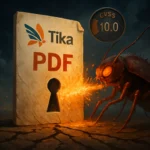The cybersecurity industry faces an unprecedented challenge as artificial intelligence-generated vulnerability reports flood bug bounty programs with low-quality submissions. This emerging crisis threatens to undermine one of the most effective mechanisms for identifying and addressing security vulnerabilities in software systems. Daniel Stenberg, creator of the widely-used Curl tool, has announced his readiness to completely shut down his project’s bug bounty program due to the overwhelming volume of AI-generated noise.
Statistical Reality: The Scale of AI Report Contamination
Current data reveals the alarming extent of this problem. Approximately 20% of all vulnerability reports in 2025 consist of AI-generated content, according to Stenberg’s analysis. The Curl project receives roughly two potential vulnerability reports weekly, yet only 5% prove to be legitimate security concerns—a dramatic decline from previous years’ success rates.
The quality degradation presents a particularly concerning challenge: security professionals often cannot immediately distinguish between human-authored reports that utilize AI assistance and completely machine-generated submissions. This ambiguity forces security teams to invest significant time analyzing reports that may lack any substantive value.
Economic Impact on Open Source Security Initiatives
The financial implications extend beyond simple time costs. Curl’s bug bounty program, operational since 2019, has distributed over $90,000 for 81 confirmed vulnerabilities. However, the increasing volume of false reports creates unsustainable resource demands on project maintainers.
Curl’s security team comprises only seven individuals, with each report requiring review by three to four specialists. The analysis process consumes between 30 minutes and three hours per submission, creating a bottleneck that strains volunteer resources and threatens program sustainability.
Human Resource Burnout in Security Teams
Beyond time consumption, the psychological impact on security professionals cannot be overlooked. Processing meaningless reports leads to emotional exhaustion among security team members, particularly volunteers who can dedicate only limited hours weekly to these critical activities. This burnout threatens the long-term viability of community-driven security initiatives.
Industry-Wide Implications and Similar Challenges
The AI-generated report problem extends far beyond Curl’s ecosystem. Multiple high-profile projects report similar challenges, indicating a systemic industry issue requiring coordinated solutions.
Seth Larson from the Python development team raised comparable concerns in December 2024, emphasizing the high processing costs associated with AI-generated reports that appear superficially legitimate. His observations align with broader industry trends showing deteriorating report quality across multiple platforms.
Benjamin Piufl from Open Collective confirmed similar issues within their organization while warning that stricter reporting requirements might inadvertently discourage legitimate young security researchers from participating in vulnerability disclosure programs.
Proposed Solutions and Their Limitations
Several potential mitigation strategies have emerged from industry discussions. Stenberg considers implementing submission fees or eliminating monetary rewards entirely. However, he acknowledges that removing financial incentives may not completely eliminate junk reports, as many submitters genuinely believe their AI-assisted contributions provide value.
Current policies on platforms like HackerOne require disclosure of generative AI usage but do not prohibit its application. This approach proves insufficient for addressing the fundamental quality issues plaguing contemporary vulnerability research.
Long-term Consequences for Security Research
The AI-generated report crisis may fundamentally reshape security research landscapes. Transitioning to stricter verification systems and limiting access to verified researchers could create significant barriers for newcomers entering the cybersecurity field, potentially stifling innovation and reducing the overall talent pool.
The proliferation of AI-generated vulnerability reports represents a critical threat to cybersecurity ecosystem sustainability. Industry stakeholders must develop sophisticated filtering mechanisms and quality control processes to preserve the integrity of bug bounty programs. Without immediate intervention, the security community risks losing valuable tools for vulnerability discovery and software security improvement. Organizations relying on crowd-sourced security research must balance accessibility with quality assurance to maintain effective vulnerability disclosure programs while supporting the next generation of security professionals.






